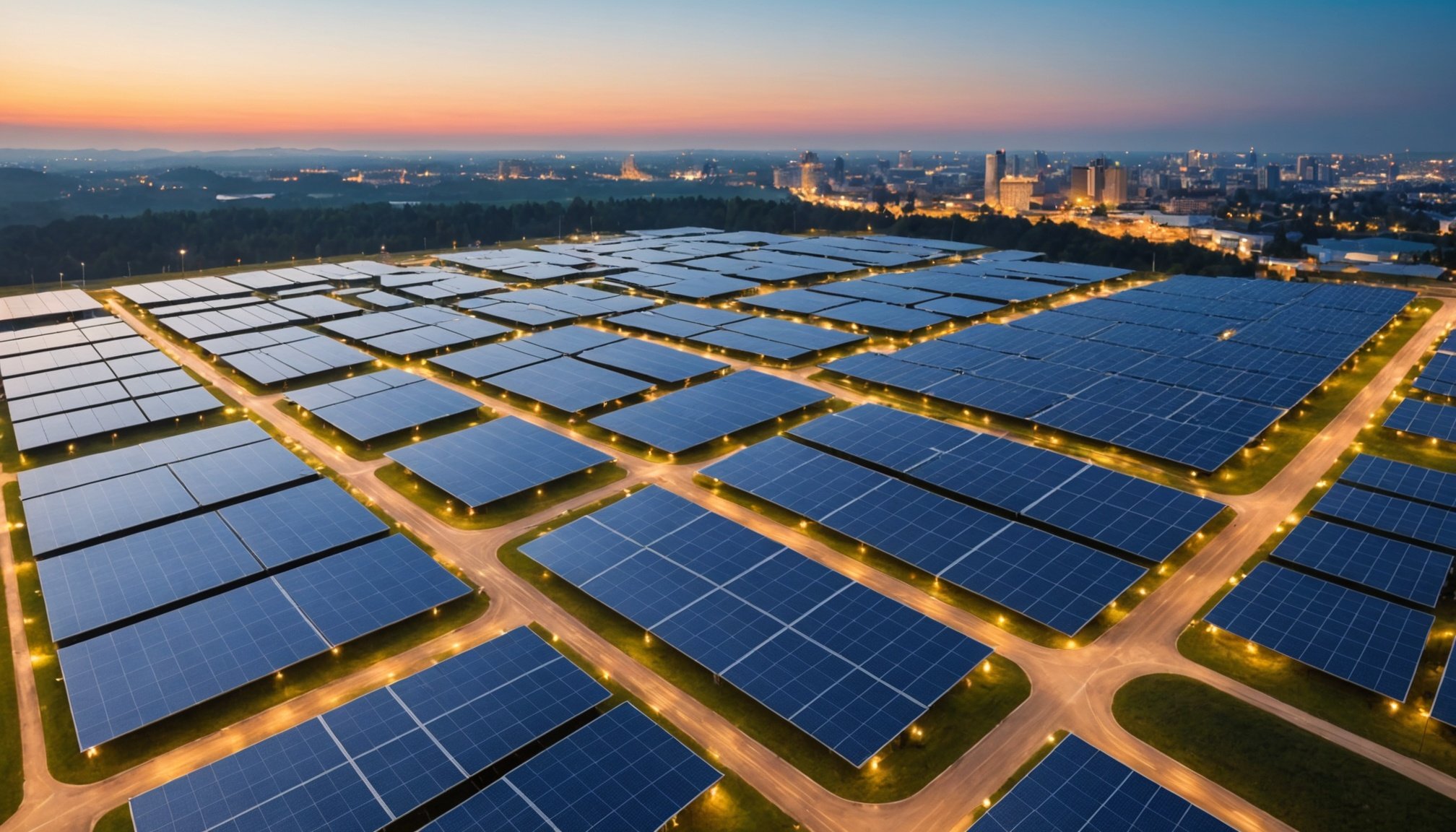Overview of AI Technologies in Smart Grids
The integration of AI in smart grids signifies a transformative shift in how energy systems function. But what role does AI play in these systems? AI serves as the brain behind energy distribution, using advanced algorithms to manage and optimize power flows. It ensures energy optimization by analyzing consumption patterns and predicting future energy needs.
A summary of key AI technologies deployed in these systems includes machine learning and predictive analytics. These technologies allow for real-time monitoring and decision-making, which are crucial for efficient energy management. Machine learning can accurately forecast demand, allowing utilities to adjust their energy output accordingly. This not only enhances energy efficiency but also reduces operational costs.
Have you seen this : Embracing ai: transforming malware detection for a safer cybersecurity landscape
Why is energy efficiency so critical in modern energy systems? With the growing demand for sustainable energy sources, optimizing energy use becomes necessary. AI technologies contribute significantly by minimizing waste and maximizing the use of available resources. Moreover, they facilitate better integration of renewable energy sources into the grid, contributing to more sustainable power generation. As such, AI in smart grids is pivotal in driving the future of energy systems towards greater efficiency and sustainability.
Innovative AI Strategies for Enhancing Energy Efficiency
In today’s rapidly evolving energy landscape, AI strategies play a crucial role in advancing energy efficiency enhancement. By leveraging predictive analytics, organisations can forecast energy consumption more accurately, allowing for smart grid optimization. This involves using historical data and algorithms to predict future energy demands, enabling grids to adjust supply dynamically and reduce wastage.
Have you seen this : Enhancing dao protection: how blockchain safeguards decentralized autonomous organizations
A core component of these strategies is the application of neural networks and machine learning. These technologies are adept at identifying patterns and anomalies in energy use, facilitating automated system adjustments. For example, neural networks can track and predict peak usage times, ensuring that enough energy is available when needed most, thus maintaining grid stability and efficiency.
Moreover, AI excels in real-time data processing and decision-making. This capability ensures rapid responses to fluctuating energy demands, which is essential for maintaining optimal performance in smart grids. By processing vast amounts of data instantaneously, AI systems can implement decisions that reduce energy consumption and improve overall system resilience.
Case Studies of Successful AI Implementations
Exploring real-world AI case studies sheds light on how this technology transforms industries. Successful applications demonstrate innovative uses, particularly within the energy sector’s smart grid examples. These studies offer invaluable insights into AI’s vast potential.
Case Study: AI-Driven Demand Response Programs
AI has enhanced demand response strategies by optimizing energy consumption patterns. By analysing consumption data, AI systems predict peak times and manage loads intelligently. This contributes to grid stability while offering economic benefits to consumers.
Case Study: Automated Fault Detection and Self-Healing Grids
In smart grids, AI systems detect and address faults autonomously. Real-time monitoring and rapid response ensure minimal service disruptions. Enhanced grid reliability results from AI’s predictive capabilities, significantly reducing downtime.
Case Study: Integrating Renewable Energy Sources
AI supports the integration of renewables by managing variable outputs effectively. This ensures steady energy supply without overstressing the grid. Key metrics indicate improvements in energy efficiency and cost reductions.
Lessons learned from these cases underscore AI’s role in boosting operational efficiency. Future projects can draw from these insights, leveraging AI to further enhance grid reliability and sustainability.
Potential Benefits of AI in Smart Grid Energy Efficiency
The integration of Artificial Intelligence (AI) into smart grids presents significant benefits for energy management. One of the foremost advantages is the reduction in overall energy costs. AI technology enables dynamic pricing models and predictive maintenance, automatically adjusting supply to meet demand efficiently, which helps in lowering expenses.
AI’s role in improving reliability and efficiency is equally vital. By analysing data in real-time, AI systems can predict and mitigate disruptions, ensuring a more consistent energy supply. This not only enhances performance but also minimizes outages and reduces the need for manual intervention.
Sustainability is greatly influenced by AI’s capacity for optimized resource use. AI can forecast energy usage, directing resources where they are needed most, and minimizing waste. This level of optimization leads to an environmentally conscious approach to energy distribution, supporting overall sustainability.
The adoption of AI in smart grids is not just about managing energy more effectively; it is a cost-effective approach that paves the way for future innovations. With improved operational efficiency and resource management, AI stands as a transformative force driving energy systems towards a sustainable future.
Emerging Trends and Future Developments
In the evolving landscape of AI, its intersection with energy is pivotal. The Internet of Things (IoT) is reshaping smart grid AI applications by facilitating real-time data integration and monitoring, leading to heightened efficiency and reliability. Picture a future where smart meters autonomously optimize energy consumption, thus reducing waste and lowering costs.
Anticipated advancements in machine learning algorithms are set to revolutionise energy systems by enhancing predictive maintenance and energy forecasting capabilities. This ensures not only operational efficiency but also paves the way for more sustainable energy use.
Moreover, the future of AI in energy hinges on adaptive regulatory frameworks and rigorous industry standards. As governments worldwide acknowledge AI’s potential, they are beginning to implement comprehensive regulations designed to harness its benefits while mitigating risks. These standards are crucial, as they provide a foundation for safe and efficient technological progress, ensuring that AI deployments are aligned with societal and environmental goals.
These emerging trends and technological advancements promise a transformative impact across the energy sector, heralding a future that is both innovative and increasingly sustainable.
Expert Opinions on AI in Smart Grids
Delving into the expert insights surrounding AI integration in smart grids reveals a spectrum of perspectives among industry leaders. While many professionals champion AI for its potential to optimize energy distribution and efficiency, significant industry challenges persist. A chief concern is the integration of AI with existing infrastructure, a process fraught with technical complexities and financial burdens.
Expert opinion pieces often highlight these challenges and propose pragmatic solutions. The cybersecurity of smart grids remains a pivotal concern. As AI systems become more embedded, ensuring robust security measures is not just beneficial but crucial to prevent vulnerabilities. Additionally, there is an ongoing debate about the need for more skilled professionals who can adeptly maneuver AI technologies within the energy sector.
To overcome these barriers, experts recommend fostering collaborative efforts between technology developers and utility companies. The exchange of knowledge and resources can accelerate AI adoption, yielding substantial improvements in grid resilience and sustainability. Furthermore, regulatory advancements are imperative to create an environment conducive to innovation and maximizing benefits from AI technologies. Building trust in AI systems through transparency and accountability is another pivotal factor highlighted by industry analysts for ensuring widespread acceptance and successful deployment.
Visualizing AI’s Role in Energy Optimization
Data visualization is pivotal in understanding the AI role in energy optimization. By using smart grid diagrams, stakeholders can see how AI enhances efficiency and sustainability in energy management. These diagrams illustrate the integration of AI, showing clear data flows and optimization points, helping stakeholders make informed decisions.
Diagrams of AI Integration in Smart Grids
Smart grid diagrams detail how AI technologies, like machine learning and predictive analytics, streamline energy use. By mapping out where AI intersects with traditional energy systems, these diagrams provide insights into potential areas for innovation and improvement.
Infographics on Energy Savings Statistics
Infographics are powerful tools for conveying energy savings statistics. They distill complex data into understandable, visually appealing formats. This enables stakeholders to quickly grasp the scope of AI’s role in reducing energy consumption and costs, supporting strategic planning and investment.
Visual Case Studies of AI Impact
Visual case studies showcase real-world examples of AI’s impact on energy systems. Through compelling graphics, they highlight the benefits derived from AI integration, such as enhanced efficiency and reduced emissions. These visual aids are essential for conveying clear and accessible information, fostering a deeper understanding of AI’s transformative potential.











